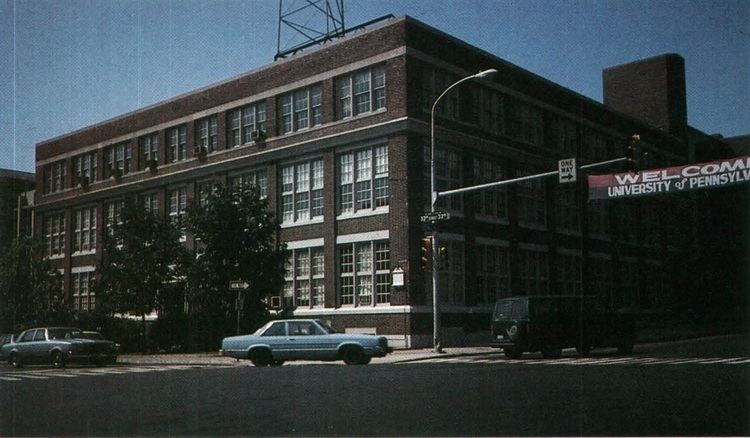 | ||
The Ballistic Research Laboratory (BRL) at Aberdeen Proving Ground, Maryland was the center for the United States Army's research efforts in ballistics (interior, exterior, and terminal) as well as vulnerability/lethality analysis.
Contents
In 1992, the BRL's mission, personnel, and facilities were incorporated into the newly created Army Research Laboratory, and BRL was disestablished.
History
According to a pamphlet published in 1955 by the US Army's Ordnance Corps, BRL was "established by the Ordnance Department (Ordnance Corps) because they recognized that Ballistics, the study of the motion of projectiles, provides a rational foundation for the design and development of Ordnance." The name was originally plural, reflecting subordinate laboratories for each of the ballistic disciplines, but these were eventually redesignated divisions of a single laboratory.
Advisors and Consultants
Over the years, and particularly during World War II, BRL's permanent technical staff was augmented by a number of eminent scientists and engineers serving in various capacities. Among those was noted American astronomer Edwin P. Hubble who served as Chief of the External Ballistics Branch of the BRL during which he directed a large volume of research in exterior ballistics during the war which increased the effective fire power of bombs and projectiles. His work was facilitated by his personal development of several items of equipment for the instrumentation used in exterior ballistics, the most outstanding development being the high-speed clock camera, which made possible the study of the characteristics of bombs and low velocity projectiles in flight. The results of his studies was credited with greatly improving design, performance, and military effectiveness of bombs and rockets. Other included members of the Scientific Advisory Committee (SAC) which was established in 1940. Among its member were:
Other consultants included astronomer Dorrit Hoffleit; chemists John Gamble Kirkwood (recipient of the Langmuir Award), George Kistiakowsky (recipient of the Medal for Merit, Medal of Freedom, National Medal of Science, and the Priestley Medal), and Franklin Long; computer scientist Herman Goldstine (recipient of the National Medal of Science); mathematicians George Carrier (recipient of the National Medal of Science) and Richard Courant; mechanical engineer Howard Wilson Emmons; and physicists Walker Bleakney (a pioneer of mass spectrometry), Joseph O. Hirschfelder (recipient of the National Medal of Science), Norman Ramsey (Nobel laureate), Robert G. Sachs (founder and director of Argonne National Laboratory), and L.H. Thomas (the first fellow in IBM's Watson Research Center).
Model 91/38
On March 27 of 1964, the U.S. Army's Ballistic Research Laboratory, according to the 36th U.S. President's Commission (commonly known as the Warren Commission), played host to one of the most famous rifles in U.S. history. On that date, three marksmen test fired a Mannlicher–Carcano Type 38, the rifle used by Lee Harvey Oswald to assassinate President John F. Kennedy on November 22 of 1963. Only one of the three expert marksmen was able to fire three shots somewhat close to the established official time limit attributed to Oswald. But unlike Oswald from the 6th Floor of the Texas School Book Depository Building, these three marksmen were allowed to use a gun rest, and they were also allowed to take as much time as they needed to line up their first shot at a stationary target. Oswald shot at a moving target.
Computers
BRL played an important role in the history of computer development:
